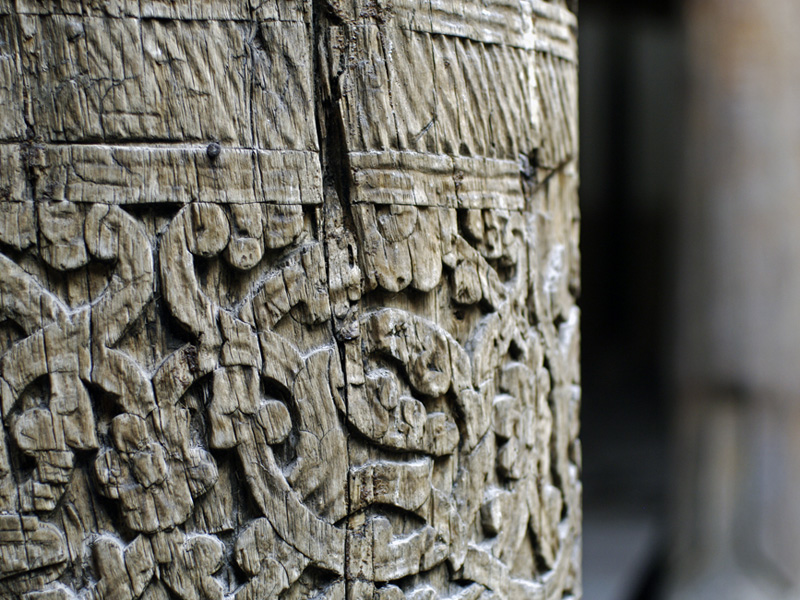



Attraction

Recreation

Especially during the last seven years, it was destroyed four times. That is why the number of merchants was so low and at the same time they were very poor, so that I could sell only four pieces of fabric in the whole city. The petty producers comprised a considerable portion of population. The handicraft here was specialized.»
One of the developed handicrafts was weaving — making cloth out of cotton. The most important fabric was coarse calico (kirbas in Tadjik-Persian, boz, booz in Uzbek, byaz in Russian). The Khiva masters made various kinds of coarse calico: both cheap and expensive ones, including fine high-quality fabrics. This fine fabric was intended, mainly, for the richest feudal lords. As long ago as the Saalibi (961-1038), kirbas was exported from Khorezm to many cities of the East. Coarser and cheaper types of calico were made by the weavers, bought by the ordinary people, and taken to the nomadic steppes. The constant demand for the coarse calico by the nomadic population was one of the stimuli of further development of this branch of production both in Khiva and in the cities of the khanate. F. Efremov, who was in Khiva in the 1870s, noted: «Cotton fabrics were made in large amounts. They wove yashmaks, muslins, and flax; of which they made cotton print, printed cloth, muslins, pestryads, impressed cloth, bridal veils, burmets, coarse calicos and other different fabrics in Russia and in other states». However, in the seventeenth and eighteenth centuries, many valuable textile items came to Khiva from Bukhara.
Silkworm breeding played an important role in the economic life of Khiva, Silk and half-silk (mixed silk) fabrics were produced there. Bukhara merchants came to Khiva to buy silk. In 1669 M. Fedotov wrote: «They make silk, coarse calico and plain zendens. The silk fabrics were often dyed in color».
The mastery of metal-goods production, including cast-iron goods, played a considerable role. Majority of the Khorezm coppersmiths and blacksmiths lived and worked in Khiva.
The people of Khiva produced firearms and side arms: harquebusses, saydaks and spears as well as bows and arrows. «They made arms and ammunition themselves, but they had never seen any cannons», until 1818, when artillery was used against the Akhal-teke campaign of Mukhammad Rakhim. The armament of the Khiva troops in 1885 consisted of sabres, guns, muskets, one eighteen-foot cannon, and sixteen falhonets.
Nineteenth century Khiva masters created gold and silver jewellery that was unique and beautiful.
Carpet making was highly developed. The high quality carpets of the local masters, especially Tekin carpets and carpets of the Turkmen masters, which were delivered to Khiva, were famous, and in great demand. Many were exported to the other regions.
The woodworking tradition goes back to ancient times as well. The carved pillars in the buildings of the grand scale; the carved doors of palaces, madrasas, and dwelling houses; chests; horse collars, and items necessary for everyday life, were produced by the highly specialized masters of wood-working. A fine wooden khan's throne, today a museum exhibit, reflects high skills of the Khivan wood-workers.
Many other handicrafts have flourished in Khiva. The ceramic vessels made in Khiva are unique in their expressiveness and elegance. Other handicrafts, including fur coat sewing, men's hat-making, plaster and stone carving, leather working, and shipbuilding were highly developed. Twenty-seven handicraft professions are mentioned in the Khiva khan's archives. In realty the number was far more.
The main part of the population of Khiva was craftsmen who sold their goods. To become a skilled master many years are required. A master mainly taught his elder son, instilling in him the professional skills, traditions, and secrets of his handicraft. In some cases, when additional assistance was required for work, apprentices were accepted from outside the family. In this case the conditions and terms of study were put in to written form. Before receiving the rank of the master and opening his own workshop, the craftsman had to show his skill and get the masters' permission for opening a workshop. The shop organized the work of craftsmen and represented their interests to the khanate's officials. Only small part of the Khiva craftsmen owned their own workshops. Many craftsmen worked at home, and many rented their workshops, which, as a rule, belonged to feudal rulers, including the khan. Some craftsmen worked to order, and some tried to set of more extensive enterprises, though feudal relations prevailing in the Khiva Khanate hampered them. Some combined handicraft with agriculture. Their ability to cultivate a good harvest impressed the foreigners who visited Khiva. «Even in Germany I have not seen such zeal in cultivating fields as exists in Khiva», one of them wrote in 1820.
The feudal nobility that lived in Khiva and the Khan himself were big landowners. They had great income from their land. Many of them also had shops, workshops, caravanserais, bathhouses, and other profitable establishments in Khiva.